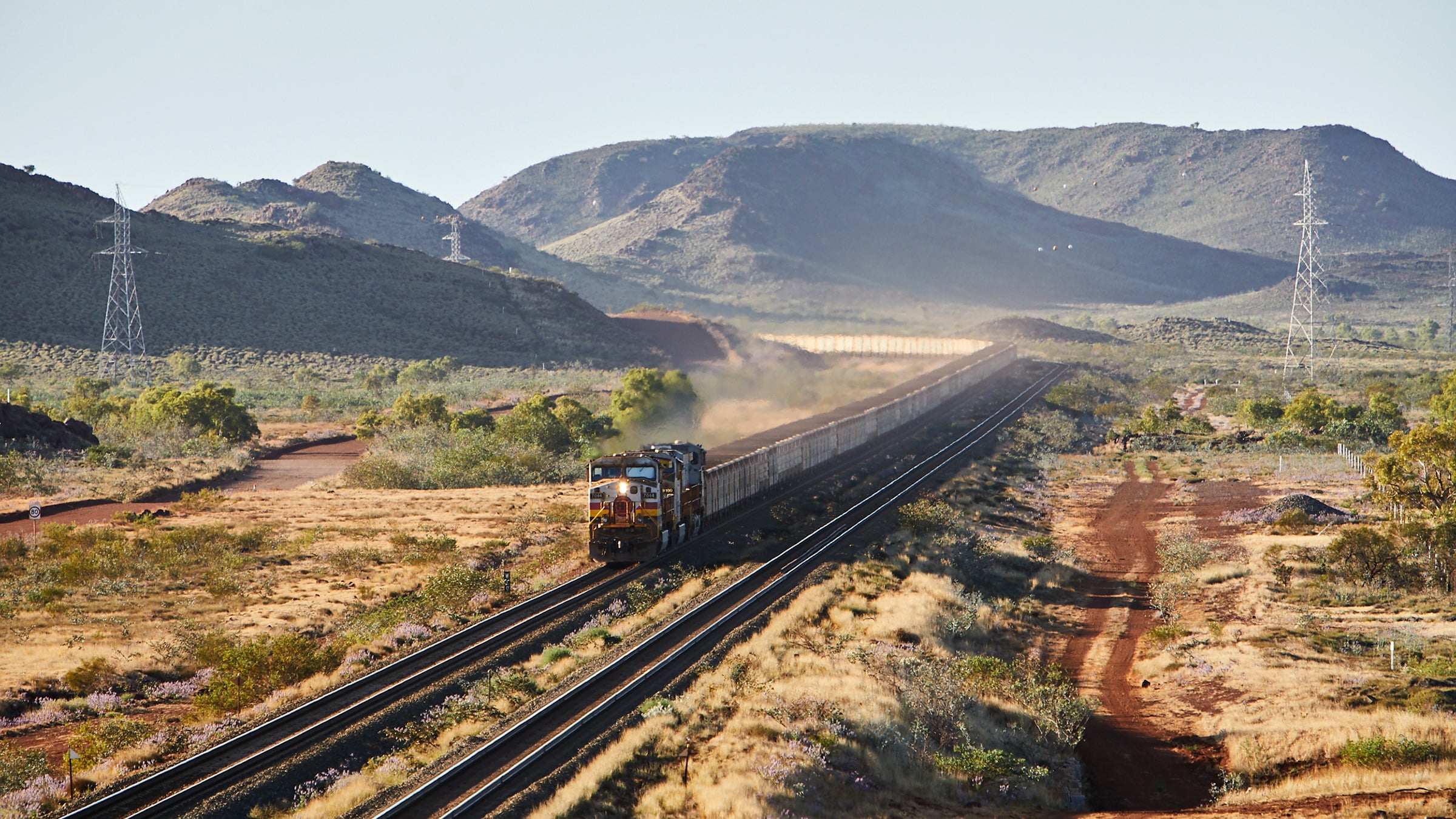 Hitachi Rail and Rio Tinto have commissioned the connection of the new Gudai-Darri iron ore mine in Western Australia’s Pilbara with the AutoHaul rail network.
Hitachi Rail and Rio Tinto have commissioned the connection of the new Gudai-Darri iron ore mine in Western Australia’s Pilbara with the AutoHaul rail network.
The greenfield mine development has involved the construction of a 166 km rail spur to connect the new mine to Rio Tinto’s existing autonomous rail network in the region.
The world’s first fully automated heavy-haul, long-distance rail system, AutoHaul enables 220 trains, which are monitored remotely from an operations centre in Perth, to travel safely and efficiently across more than 1,866 km of track from mines to ports, without the need for onboard drivers.
For the AutoHaul rail network Hitachi Rail has provided the systems and software to connect the new section of rail for Gudai-Darri mine. This has included onboard and control centre technology, trackside equipment, radio base stations, and automatic train operation (ATO) interface software for locomotive control, level crossing safety and location tracking.
All systems and software are now operational following the first production test run and subsequent successful system commissioning.
“The Gudai-Darri AutoHaul network expansion project is a natural extension of Hitachi Rail’s long-term collaboration to deliver innovative rail transport solutions for Rio Tinto. The project has seen Hitachi Rail and the Rio Tinto AutoHaul team deliver another ‘first’, with back-to-back loading (high performing automated train loading) to be introduced on the Gudai-Darri mine rail loop,” Hitachi Rail Australia Senior Director Roslyn Stuart, said.
AutoHaul rail network has been successfully deployed in 2019 which delivers safety and productivity benefits for Rio Tinto’s iron ore business. The 2.4 km long trains, monitored remotely from an operations centre in Perth, travel across a vast network of 1,700 km of track, delivering iron ore from the mines to ports in Dampier and Cape Lambert.
The AUD 940 million (USD 661.57 million) AutoHaul programme uses automated trains to transport iron ore to Rio Tinto’s port facilities in the Pilbara region of Western Australia, monitored from 1,500 km away in Perth. Rio Tinto operates about 200 locomotives on the largest privately-owned rail network in Australia.
All locomotives are fitted with AutoHaul safety systems including the collision detection systems (CDS), the ATP technology and an on-board video camera to record the front view from the train ensuring constant monitoring from the Operations Centre in Perth, 1,500 km from the Pilbara. The average return distance of these trains is about 800 km with the average journey cycle, including loading and dumping, taking about 40 hours.
Rio Tinto operates the world’s largest integrated portfolio of iron ore assets and has a tangible commitment towards net-zero carbon emissions. The Gudai-Darri mine will also deploy autonomous haul trucks, fully autonomous water trucks and autonomous training solutions, and will be partially powered by a 34 megawatt photovoltaic solar farm solar plant.
Share on:






